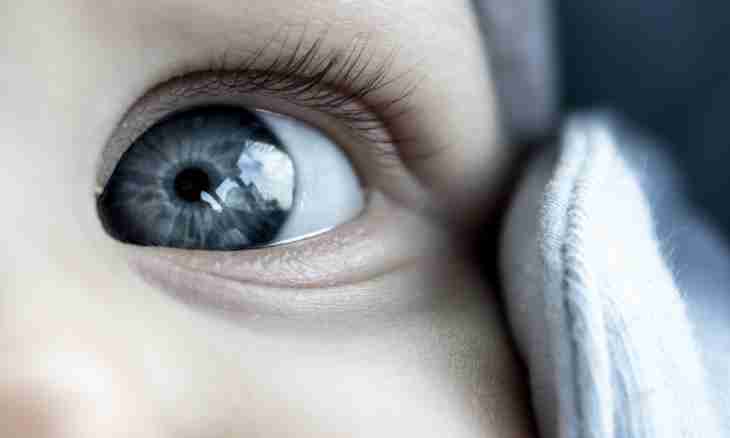Most often newborn babies are born with eyes of blue color. And it does not depend on what color of an eye parents have. The heredity will be shown in several months and then color of eyes of the child can change.
The physiological features influencing coloring of an iris of the eye of an eye
The main pigment which defines hair color, shade of skin and color of eyes of any person — melanin. Its concentration has fundamental impact on coloring of an iris of the eye of an eye of the person: the more melanin — the eyes are more dark. So, at brown-eyed people the maximum concentration of a pigment, and at blue-eyed — minimum is observed. In insignificant degree color of eyes is defined by concentration of fibers of the iris of the eye. The direct dependence is here too observed: the more concentration — the is more dark than an eye.
Red eyes of albinos are characterized by total absence of a pigment owing to what the blood vessels which are contained in an iris become visible.
The quantity of a pigment in cages is affected by a hereditary factor. Dark color — prepotent sign, and light — recessive. In the world the greatest number of people possesses brown eyes, and green-eyed representatives of human race, their only 2% of all population of the planet most seldom meet.
At what age color of eyes becomes constant
According to physiological features of structures of a human body, the pigment is developed by special cages — melanotsita. Their activity begins not right after appearance of the baby on light, and after a while. Thus, and the pigment collects gradually, day by day. For this reason some parents note that color of eyes of the kid changes almost daily. On average obvious changes of color of an iris begin with three-months age of the child. Most often it is already possible to judge final color of eyes of the baby at six-month age. However there are cases when change of quantity of a pigment can continue also to two, and even up to three years. Sometimes in an organism there is full heterochromia — uneven distribution of a pigment. It leads to the fact that eyes of the kid are painted in different flowers. Partial heterochromia influences coloring of different parts of an iris of the eye. At the same time small distinctions in color of eyes are not strongly noticeable. However in case of heterochromia it is necessary to show the child to the ophthalmologist not to face undesirable consequences of this violation. To foresee in advance what color the kid will have eyes is impossible. In terms of genetics, this sign is inherited under Mendel's law: at brown-eyed parents brown-eyed children, and at blue-eyed — blue-eyed are born. However only time can give the exact answer to the matter.
